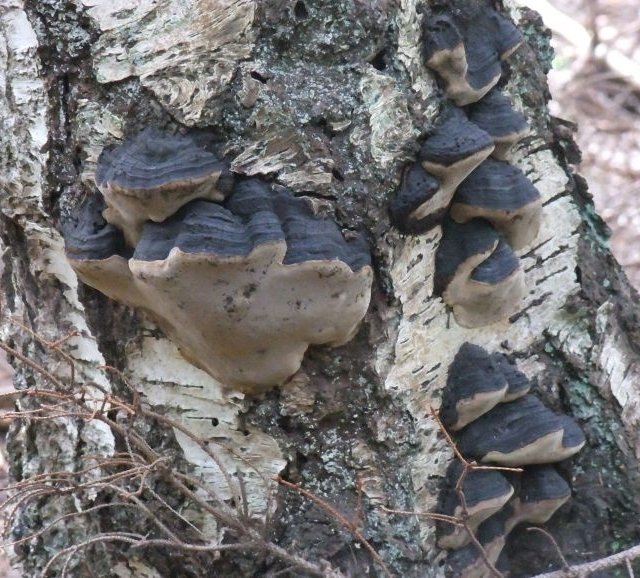Lundell’s false tinder fungus (Phellinus lundellii)
- Division: Basidiomycota (Basidiomycetes)
- Subdivision: Agaricomycotina (Agaricomycetes)
- Class: Agaricomycetes (Agaricomycetes)
- Subclass: Incertae sedis (of uncertain position)
- Order: Hymenochaetales (Hymenochetes)
- Family: Hymenochaetaceae (Hymenochetes)
- Genus: Phellinus (Phellinus)
- Type: Phellinus lundellii (Lundell’s false tinder fungus)
:
- Ochroporus lundellii

Fruit bodies are perennial, from completely prostrate to triangular in cross section (narrow upper surface and strongly sloping hymenophore, upper surface width 2-5 cm, hymenophore height 3-15 cm). They often grow in groups. Upper surface with a well-defined crust (which often cracks), with narrow concentric relief zones, usually jet black, brownish or grayish along the very edge. Sometimes moss grows on it. The edge is often wavy, well-defined, sharp.
The fabric is rusty-brown, dense, woody.
The surface of the hymenophore is smooth, of dull brownish hues. The hymenophore is tubular, the tubules are layered, rusty-brown mycelium. The pores are round, very small, 4-6 per mm.
Spores broadly ellipsoid, thin-walled, hyaline, 4.5-6 x 4-5 µm. The hyphal system is dimitic.

It grows mainly on dead hardwood (sometimes on living trees), mainly on birch, less often on alder, extremely rarely on maple and ash. A typical mountain-taiga species, confined to more or less humid places and is an indicator of the undisturbed forest biocenoses. Does not tolerate human economic activity. Occurs in Europe (rare in central Europe), noted in North America and China.
In flattened fellinus (Phellinus laevigatus), the fruiting bodies are strictly resupinate (prostrate), and the pores are even smaller – 8-10 pieces per mm.
It differs from the false blackish tinder fungus (Phellinus nigricans) by a sharp edge and a much more oblique hymenophore.
Inedible
Notes: The photograph of the author of the article is used as the “title” photo for the article. The fungus has been microscopically tested.









